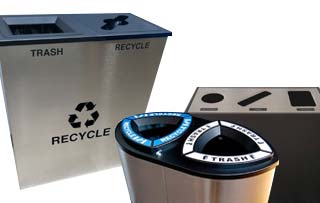
Every corporate environment has targets that they set out and pursue to achieve. The purpose of setting these goals is to better the organization and improve the manner in which specific actions are performed. Goals are also organized as a means to better the success of the company.
With the dire need for individuals and corporations to make a change with how resources are utilized sustainable goals should also be a part of corporate objectives. Sustainable goals ensure that organizations work diligently to maintain an ecological balance while working towards their success.
Below are a few examples of achievable sustainable goals that corporations can adopt. These models are realistic and can help organizations operate responsibly.
1) Human Resources
When considering sustainability, very few think of how human resources can have an impact on the ecological functioning of an organization. However, there are quite a few ways. There are two main ways the human resources department can contribute to sustainability. They both involve training and engaging.
Human resources play an integral role in training individuals and familiarizing employees with the principles and actions of the organization. During this process, various brochures, pamphlets, and leaflets are handed out to employees.
To reduce environmental impacts, fewer papers can be distributed and instead accessed electronically. This can set a precedent for employees and encourage them to be mindful of how they use or overuse resources.
Incorporating sustainability education into training, and instilling the importance of recycling, limiting the use of energy such as turning a light off when a room is not in use, encourages the engagement of workers. It also urges them to be responsible, an action that can extend into their practices at home.
2) Office Efficiency
There are straightforward steps that can be made to improve corporate sustainability in the office, By setting the goal of turning off computer monitors when stepping out for breaks, meetings, and at the end of the day, this is a great way to eliminate your corporation’s ecological footprint.
Completely powering down computers at the closing of the day is also a great practice. Encouraging recycling, setting up network printers, and using recycled paper, are just some of the habits that can be adopted.
Although the idea of re-adjusting your office or organization’s practices to achieve corporate sustainability can appear daunting, there are simple steps that can lead the way. As time progresses, more insistent habits can be implemented.
3) Plant Operations
In addition to the efforts of the office, other departments can take on the task of achieving corporate sustainability. Support staff, which includes the persons responsible for maintenance, and renovations, can make changes to how they perform their job.
Using eco-friendly cleaning products, paint with low VOCs, and recycling objects correctly can play a role in improving your corporation’s ecological footprint. Also, encouraging support staff to use salvaged materials or objects can be beneficial.
Corporate sustainability is significant as it reduces an organization’s damaging impact on the environment. By incorporating achievable yet straightforward goals and habits, your corporation’s responsible patterns and actions can have a positive influence on the earth.
























































































 Three Ways to Engage Teams and Clients to Maximize Your Recycling Program Engagement
Three Ways to Engage Teams and Clients to Maximize Your Recycling Program Engagement  How to Integrate Accessibility Into Your Sustainability Planning
How to Integrate Accessibility Into Your Sustainability Planning  Why Park Benches Can Promote Workplace Well-Being
Why Park Benches Can Promote Workplace Well-Being 
